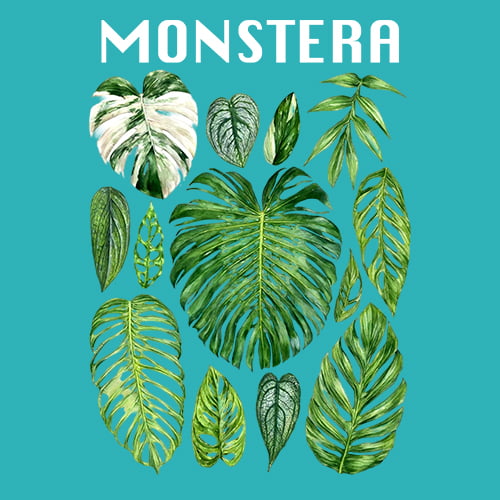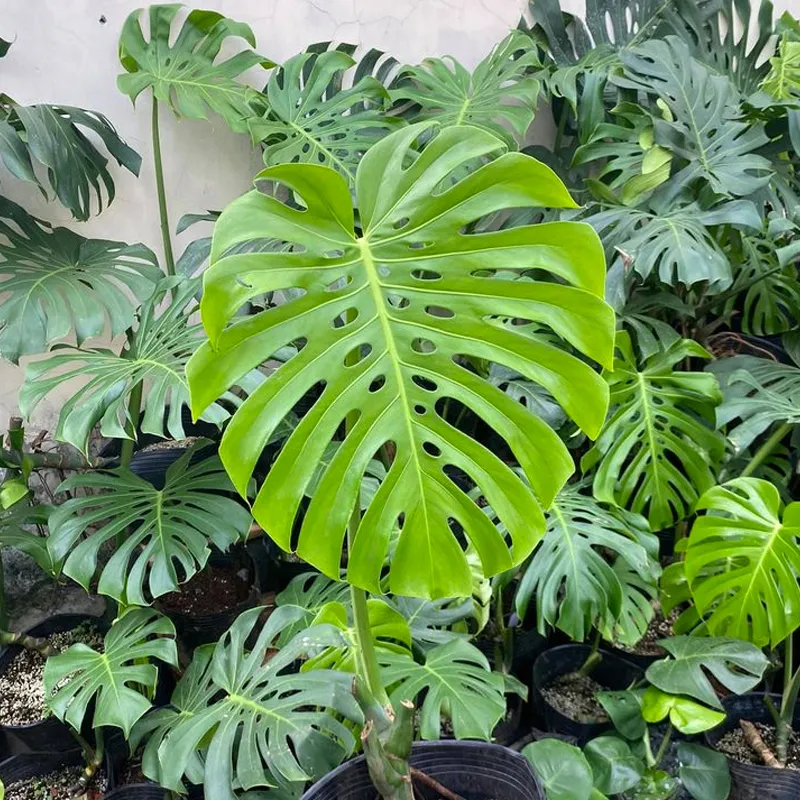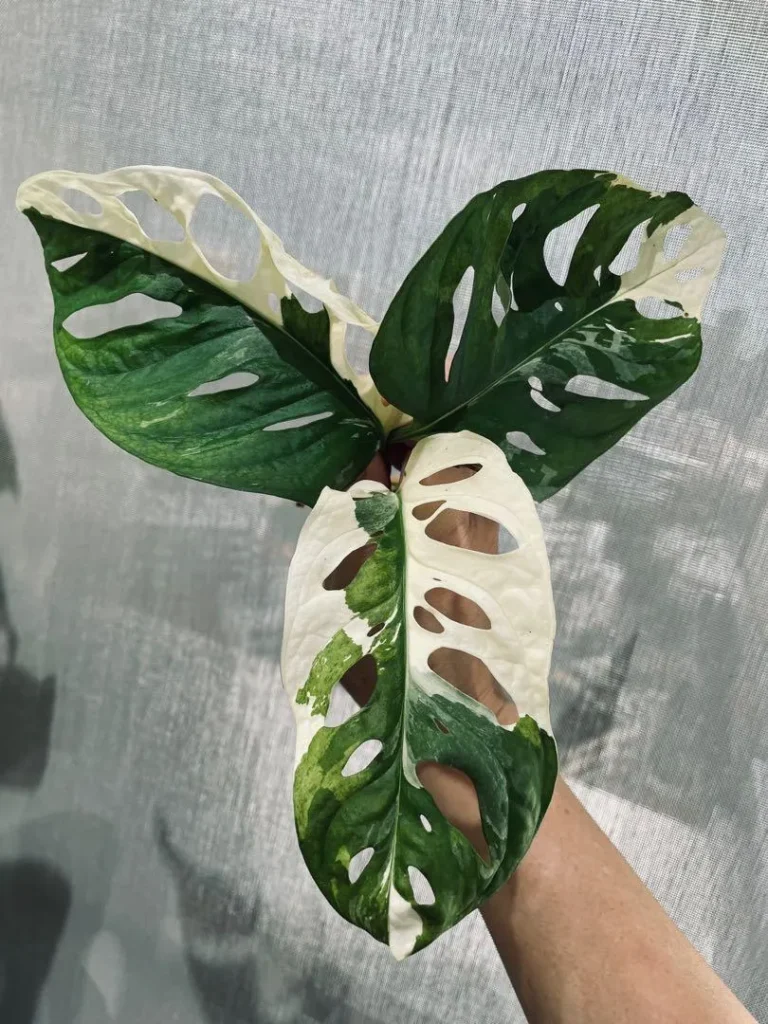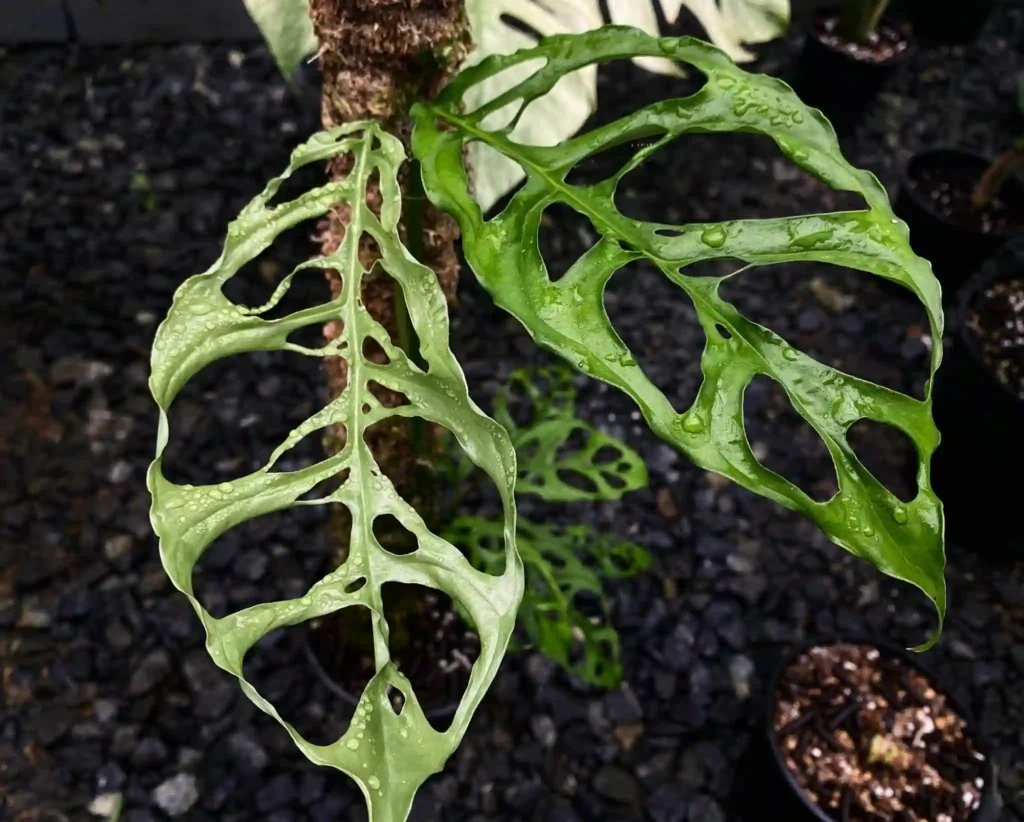
A Mesmerizing Introduction
The Monstera Deliciosa Albo Variegated entered my life like a botanical enchantment when I first encountered its broad, artfully adorned leaves at a local plant emporium. The captivating dance of creamy white variegation against lush greenery instantly seized my attention, and I found myself drawn to the allure of the Monstera Albo – a plant renowned for its unique charm and exquisite rarity.
The Botanical Symphony
Scientifically identified as Monstera Deliciosa Albo Variegated, this verdant marvel is also affectionately known as the Swiss Cheese Plant or Windowleaf. Flourishing under the gentle embrace of bright indirect sunlight, it has seamlessly integrated into the well-lit corners of my indoor haven. As a conscientious plant parent, I’ve embraced the rhythmic cadence of weekly watering, ensuring the soil’s top layer dries out before the next hydration session.
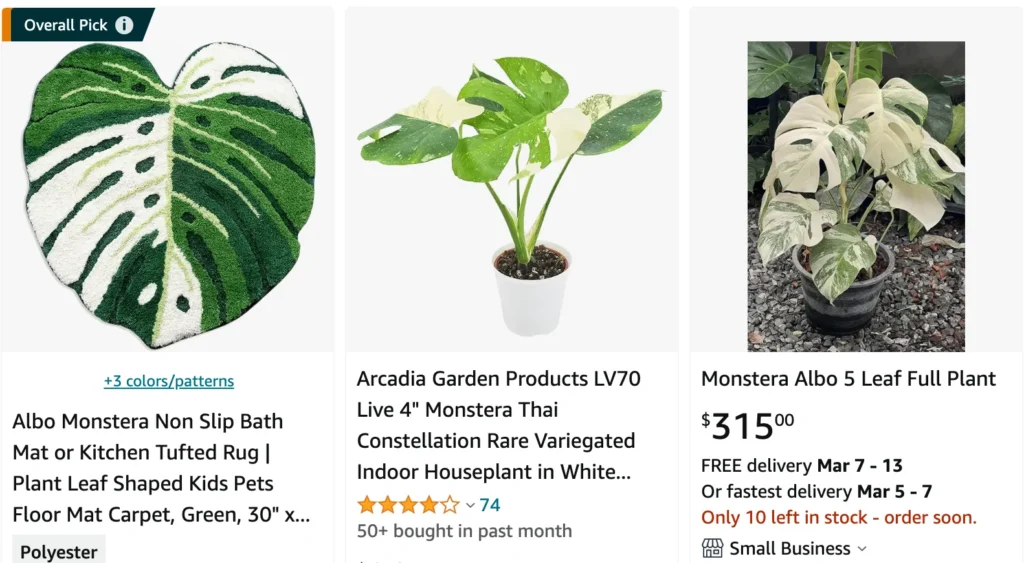
Cultivating an Ideal Habitat
Maintaining an optimal temperature range between 65°F and 80°F (18°C – 27°C), I’ve strived to mimic the mild climates of USDA Hardiness zones 9b to 11 – the sweet spot for Monstera Deliciosa Albo Variegated. To enhance its habitat, a humidity level of 70-85% has become the plant’s personal climate concerto. Techniques such as misting and strategic placement near a humidifier have elevated the moisture content within my home sanctuary.
Unveiling the Roots: Soil and Nutrition
Beneath the lush foliage lies the secret to Monstera Albo’s vitality – rich, quick-draining, loamy soil with a pH ranging from 5.5 to 7.0. A monthly offering of a balanced fertilizer serves as the plant’s gourmet meal, ensuring a symphony of essential nutrients for robust growth. Repotting becomes a choreographed routine, performed every two to three years as the roots gracefully outgrow their current abode.
Propagation Ballet: Stem Cuttings
In the dance of propagation, Monstera Deliciosa Albo Variegated takes center stage with stem cuttings as its choreography. Armed with the knowledge that successful propagation demands at least one node, I’ve embraced mediums like sphagnum moss, water, leca, and perlite as stages for this botanical ballet. The moment the roots extend to a length of 2 to 3 inches, the cuttings gracefully transition to a well-draining potting mix, marking the next act in their verdant narrative.
Beware the Enchanting Toxicity
Yet, amidst the botanical poetry, a note of caution arises. The Monstera Albo, with all its elegance, is not without its toxic allure. A silent protector, I’ve elevated it beyond the reach of both children and pets, letting its beauty thrive while keeping potential harm at bay.
Aesthetic Mastery: Monstera Albo as Art
The Monstera Deliciosa Albo Variegated’s grandeur lies not just in its toxic allure but in the visual masterpiece it creates. Large, glossy, heart-shaped leaves, generously adorned with variegation, become a visual symphony of elegance. A versatile artist, it finds its place as a captivating focal point in my living room, bedroom, or office, instantly transforming any space into a gallery of green splendor. With a moss pole as its muse, the Monstera Albo ascends vertically, crafting an awe-inspiring botanical statement.
The Albo Experience: Challenges and Triumphs
As with any artistic journey, the Monstera Deliciosa Albo Variegated is not immune to challenges. Drooping leaves, yellowing foliage, or the loss of variegation become the nuances of its silent struggles. Regular inspections and meticulous care become my tools to unravel and address these issues, ensuring the continued vibrancy of this green companion.
Blooms and Fruits: The Subtle Finale
In the nuanced performance of the Monstera Deliciosa Albo Variegated, blooms take a back seat to the grandeur of its foliage. Small, inconspicuous flowers make a fleeting appearance, overshadowed by the allure of the large, green, pineapple-like fruit – the Monstera deliciosa fruit or Swiss Cheese fruit. An edible treasure, it embodies a tropical blend of pineapple and banana flavors, although patience is a virtue as not all Monstera Albo plants bear this delectable fruit.
Monstera White Tiger vs. Albo: A Tale of Elegance
In the realm of Monstera variants, the Albo White Tiger emerges as a specialized protagonist from the enchanting lands of Japan. With enhanced coloration and a more pronounced concentration of white variegation, this variant takes the elegance of the Monstera Deliciosa Albo Variegated to unparalleled heights.
Navigating the Monstera Albo Care Symphony
Caring for the Monstera Deliciosa Albo Variegated becomes an artful symphony, orchestrating the play of light, humidity, soil, and nutrients. Attention to its specific needs – from providing bright indirect light to maintaining optimal humidity levels – becomes the sheet music for a harmonious journey. The dance with this high-maintenance yet exquisitely beautiful plant is a testament to dedication and a celebration of green elegance.
Delving into the Albo Tapestry: Types and Varieties
Within the rich tapestry of Monstera Deliciosa Albo Variegated, various types and varieties unfold. From ‘Albo Variegata’ with deep green and cream leaves to ‘Marbled Albo’ with distinct splotches of white and green, each variety paints a unique portrait. Exploring these nuances adds depth to the narrative of my Monstera Albo journey.
The Art of Monstera Albo Propagation
Propagating the Monstera Deliciosa Albo Variegated becomes an art form, a delicate process that requires patience and precision. Stem cuttings, the protagonists in this propagation drama, embark on a journey of root development in mediums ranging from sphagnum moss to water. The narrative unfolds slowly, echoing the deliberate pace of the Monstera Albo’s growth.
Repotting Rituals: Ensuring Graceful Transitions
As the custodian of a Monstera Deliciosa Albo Variegated, the act of repotting becomes a ritual, a graceful transition ensuring the continued well-being of this botanical companion. The slow-growing nature of these plants dictates a repotting schedule every two to three years, a careful dance that involves nurturing roots and embracing new soil.
Navigating Common Pests and Diseases
In the garden of Monstera Deliciosa Albo Variegated, potential pests and diseases lurk like shadowy figures. Spider mites, scale, mealybugs, fungus gnats, and thrips become the adversaries in this green saga. Regular inspections and preemptive measures, such as insecticide applications, become the shields in my battle to protect the elegance of my botanical companion.
Blooms, Fruits, and the Essence of Time
Monstera Deliciosa Albo Variegated’s blooming behavior adds a temporal layer to its narrative. Rarely flowering as a houseplant, its blossoms remain small and unobtrusive, a whisper amidst the grandeur of its foliage. The prospect of fruit, the Monstera deliciosa fruit, demands patience, with maturity and several years often standing between the plant and its delectable harvest.
Monstera Deliciosa Albo Variegated: A Rare Gem
In conclusion, the Monstera Deliciosa Albo Variegated stands as a rare gem in the realm of houseplants. Its captivating foliage, intricate care rituals, and the subtle dance of blooms and fruits weave a tale of botanical elegance. As I continue to nurture and celebrate this green companion, each leaf becomes a brushstroke in the canvas of my personal plant journey. The Monstera Albo, with its variegated allure, has not just adorned my living space but has become a living testament to the artistry of nature.
